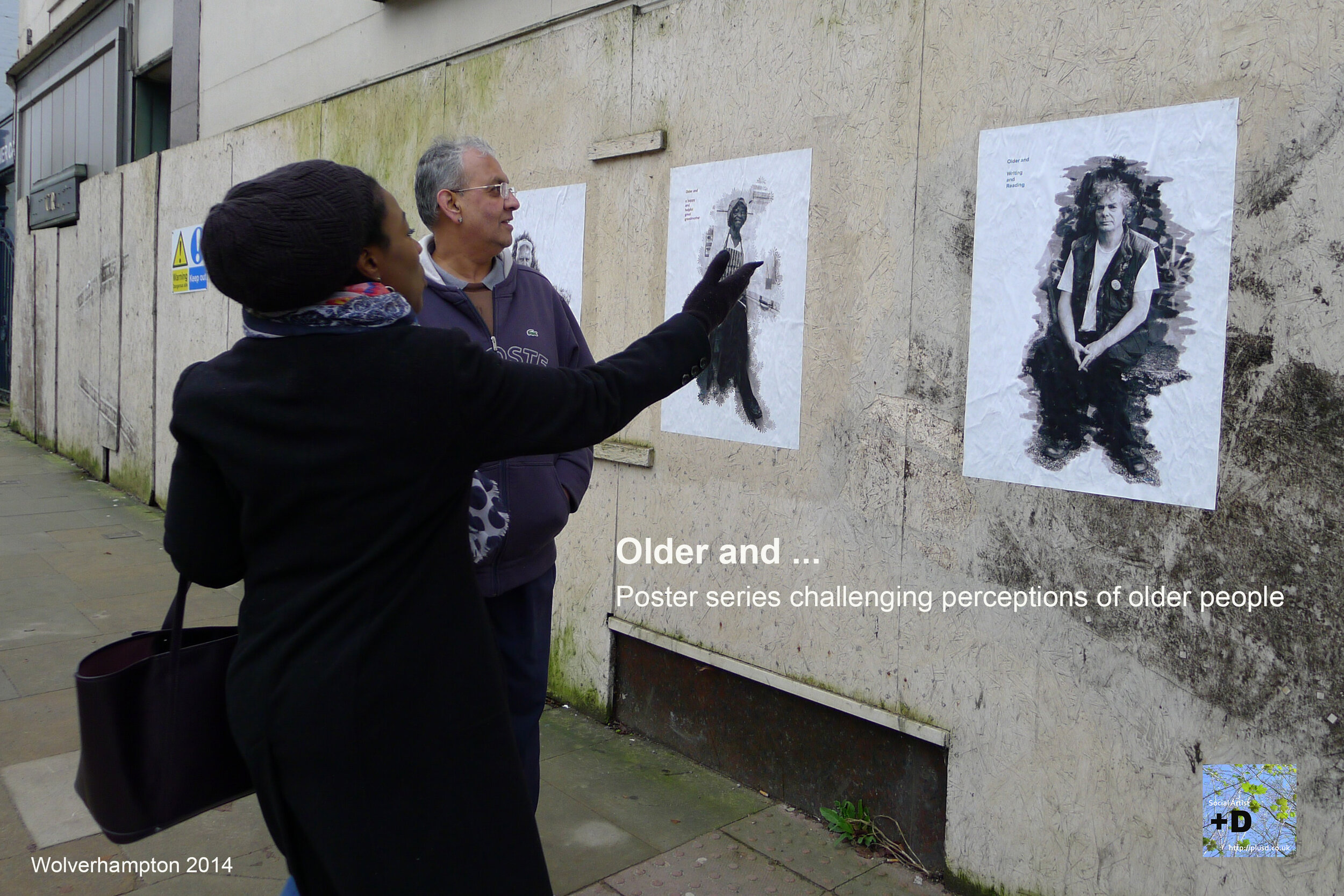Afterword is a Q&A series with authors to give an insight into the different ways you can produce a publication. Every author is asked the same questions.

Older and… poster series. Photo credit: Deborah Weinreb
Deborah Weinreb +D is a socially engaged artist and a member of the SAP steering committee. She has worked on several books, not least as a university lecturer. For this interview, she discusses her general approach to printing a publication.
1. How do you start making your publications?
Whenever I begin to design anything to be printed I first think about what printing method I might use and what size it might be. I then design to fit the size – often the ‘A’ formats work well as these are common and can be easily scaled up or down.
“When designing a book, it is worth doing a bit of research early on around the technicalities of book design”
When designing a book, it is worth doing a bit of research early on around the technicalities of book design, eg the gutter size. Being aware of considerations early may be a little tiresome, but can save you a lot of time later and may help with your designing decisions.
If you are going to use a designer, start working with them early on in the process so you can work collaboratively. It’s important to consider the best format to send your designer information. For example, make sure your JPEGs are the right size and DPI and if you have the right computer programmes to edit them. This can save you from making time-consuming mistakes. Moreover, giving a designer the correct information in the right size and format will save them time (and therefore possibly your money).
2. How did you print your publication?
A big decision to make about printing is if you are producing a short run (digital printing) that has a relatively high unit cost, or a long run (press printing) which makes the unit price much smaller but involves a bigger outlay and many more physical copies to handle and distribute. This decision does not need to be made upfront, but it is good to do some of the research early on. Paper, colour, number of pages and many more factors weigh into the printing decisions. Doing some preliminary research may guide the way you create your publication. It may also save you time later on in the process and perhaps disappointments. Of course it will also start to give you an idea of the costs that can be incurred.
3. Any final tips and tricks?
“These kinds of endeavours often take longer than one thinks, not least because many aspects are unclear at the beginning, so be ready for the unexpected.”
These kinds of endeavours often take longer than one thinks, not least because many aspects are unclear at the beginning, so be ready for the unexpected. Research around how to produce your book early so you begin to become aware of the options and costs. Decide who is going to design the publication: if there needs to be a collaboration try to find that sooner rather than later. Plan ahead, get feedback and allow time to make changes.
To learn more about Deborah’s work visit the D+ website.
